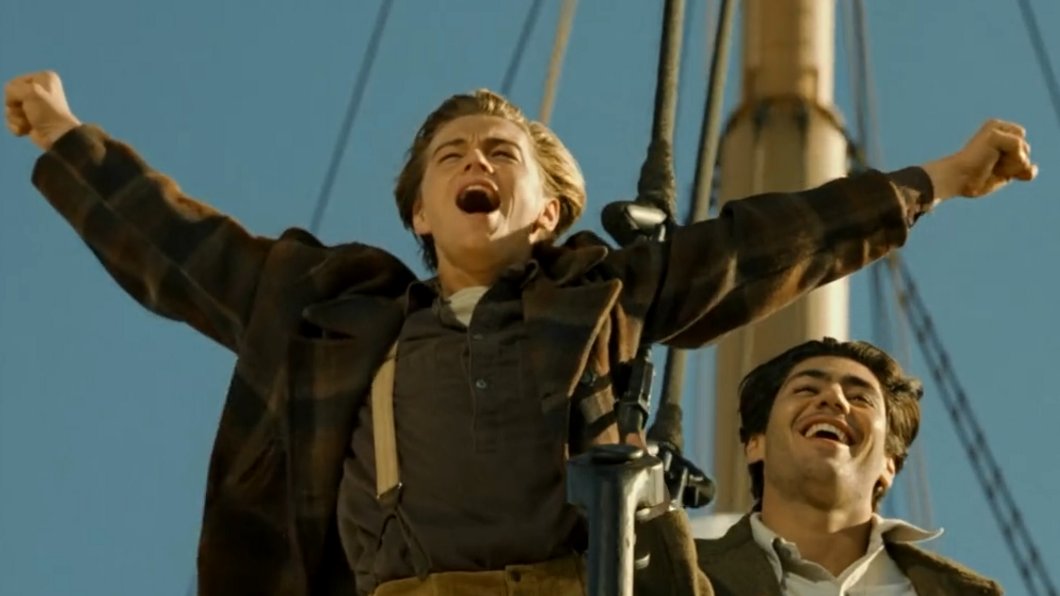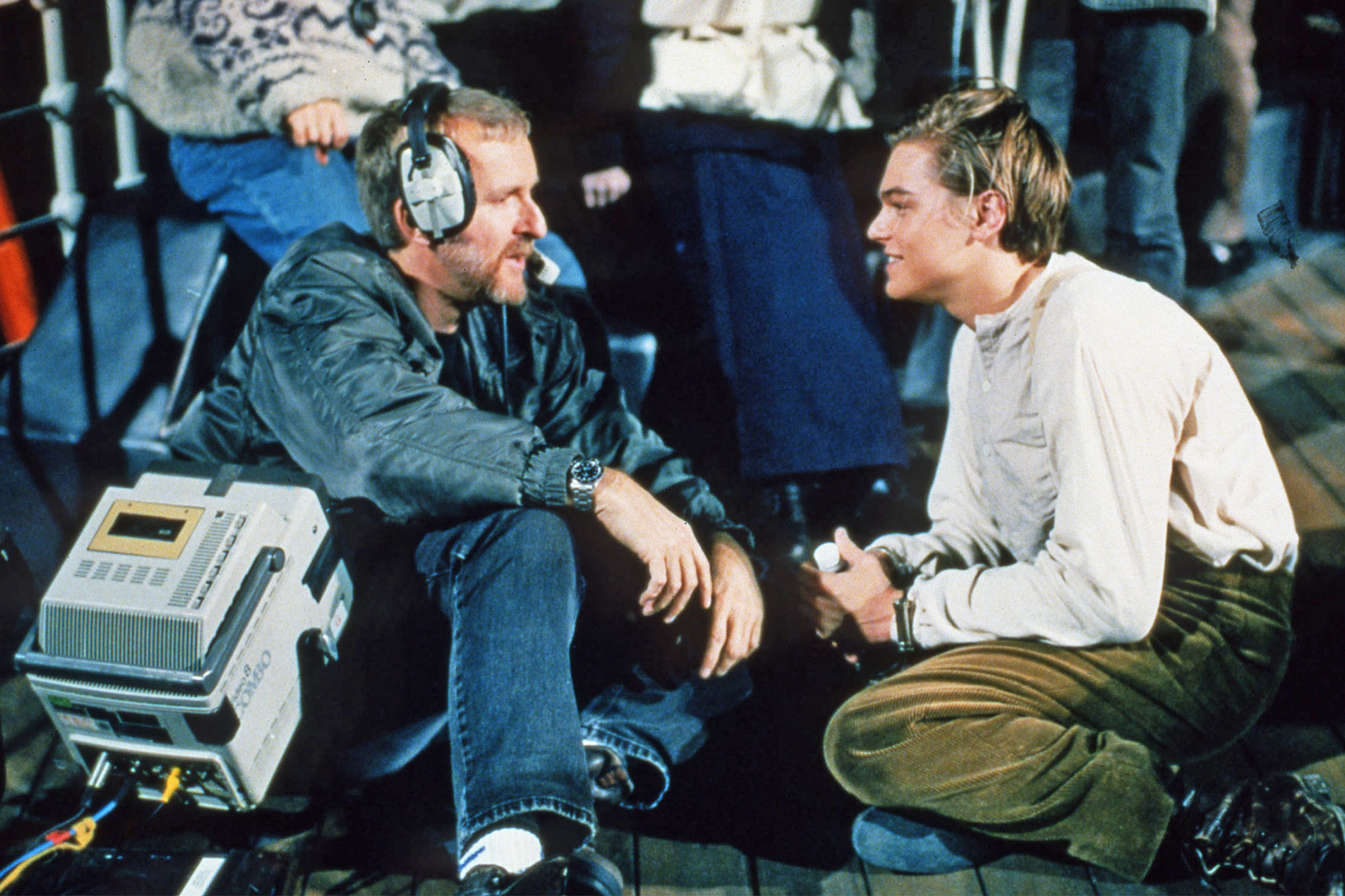James Cameron, king of the world (?)
In the past few months, three of James Cameron’s nine feature films have been (re)released in Romanian cinemas, reminding us of the reasons why we like to debate about one of the most influential filmmakers in the history of Hollywood.

„We got 14 Academy Award nominations. We got 11 wins, we made more money than any movie in history. We continue to make a lot of money with it. Why would I change a frame? I don’t think I’m any smarter now than I was then, (in fact) I’ve probably lost a few brain cells since then.” James Cameron said this in a recent promotional interview, on the occasion of the 10 February re-release of Titanic in cinemas, 25 years after it filled cinemas all the way from Los Angeles to Tulcea – where I first saw it, sitting on the sticky stairs of the local cinema, aged 11.
And who are we to dismiss the man who made three of the four highest-grossing (unadjusted to inflation) films in history? Even considering the fact that he moved to Pandora 15 years ago, he’s still very much the same perfectionist filmmaker who is perfectly tethered to the industry’s economic realities, with an incredible flair in guessing what his audience wants, equaled only by his eternal curiosity to invent or to use the most recent technical innovations to put something that has never been seen before to the big screens. Before the release of Avatar 2, mostly everyone – their fingers shaking on their keyboards – wrote that one should never bet against James Cameron, but I am wondering whether they truly believed that they would be right about it.
You have to be in control
Much has been written about Cameron’s early working years in the eighties, when he was an ex-truck driver without formal cinema studies, when he was taken under the wing of producer Roger Corman, for whom he worked in various technical departments and where he had his first experience as a director, albeit failed and prematurely interrupted (Piranha II: The Spawning, 1981). What had helped earlier filmmakers like Coppola and Scorsese in their collaborations with Corman proved to also be a boon for him. His formative years were essential, as the young director adopted a series of mantras that would guide his entire career, helping him avoid his beginner’s mistakes. You have to be in control of your projects. You have to spend money in order to make it. You have to blow your audience away.

With a few notable exceptions – a contract as a writer for hire for what we call Rambo 2, a few scripts that he gave over to capable people, resulting in the fascinating Strange Days (1995, Kathryn Bigelow) and Alita: Battle Angel (2019, Robert Rodriguez) –, James Cameron only works for himself. His original ideas often come to him in dreams – the image of a bioluminescent forest, when he was in college; the vision of a robot from the future, during a trip to Europe. And when he uses the tools or playground of another (the sequel to Alien or his remake of True Lies), the result is often very different from the source material and closer to his own sensibilities.
But his insistence upon having the power to decide didn’t make things easier for him, at least not in the first few years of his career. The Terminator (1984), shot on the fly, sometimes without having all the necessary permits, could have had a bigger budget if it would have been helmed by a more experienced director. The Abyss (1989) wouldn’t have been a nightmare for its entire production team, which spent entire months underwater, without the orders of a man who was completely overrun by the width of his plans. But it would have also certainly been a less interesting film.
You have to be in control of your projects. You have to spend money in order to make it. You have to blow your audience away.
But even so, encouraged by the phenomenal box revenues of his films (except for The Abyss, which was a bottomless pit from several points of view), Cameron pushed forward, imposing his casting ideas (Schwarzenegger instead of OJ Simpson în The Terminator, Sigourney Weaver and her one-million-dollar salary in Aliens, Kate Winslet in Titanic), his “whim” to construct a transatlantic ship almost on-scale and, last but not least, his insanely high budgets.
All the money in the world
Just a few weeks before the release of Avatar 2: The Way of Water, Cameron said that it will probably need to become the 4th or 5th-highest-grossing film of all time for it to become profitable, the Internet collectively lost its mind and journalists from all over the world revised their primary-level arithmetics to calculate what this statement meant and to prepare for Cameron’s last rites as a director. The short answer: it means that Avatar 2, which was shot in a virtual studio (which its producers dubbed “the volume”, where actors were covered in markers that recorded and uploaded their performances to a computer) is the most expensive film ever made (inflation adjustment notwithstanding). Which isn’t a premiere for Cameron. The Abyss cost 70 million dollars (in 1989!)Terminator 2: Judgement Day was the first film to birth through the 100-million-dollar glass ceiling, and then Titanic simply doubled the top-up. All of these films ran over their budgets, planned shooting days, over the nerves and patience of those who worked on them. All of this, coming from a director that is very much aware of the fact that his films must turn in a profit or else, seems like sheer madness. But it’s a calculated form of madness. And I think Cameron would make for a fantastic blackjack player.

It’s hard to overstate Cameron’s importance for a certain type of spectacular cinema that made the rounds in the pop culture sphere of the eighties and nineties. Schwarzenegger would roughen up a police station after warning them that he’ll “be back”, turning a B-series film into something much larger. Then Cameron took an older one of his scripts, titled Mother, added Ripley and a group of marines, and made a sequel that was completely different from Ridley Scott’s film. And The Abyss (1989), where water that comes under the control of an alien force mimics the facial expressions of Mary Elizabeth Mastrantonio, marks his passage from practical effects to CGI. After Terminator 2 and Jurassic Park, there was no way back, and the old masters of practical effects, like Stan Winston (The Terminator, Aliens), had to adapt to the new times.
All of these films ran over their budgets, planned shooting days, over the nerves and patience of those who worked on them. All of this, coming from a director that is very much aware of the fact that his films must turn in a profit or else, seems like sheer madness. But it’s a calculated form of madness. And I think Cameron would make for a fantastic blackjack player.
True Lies is somewhat dated, with its caricature of an antagonist who is an Islamist fundamentalist (present in many of the films shot in the day), but it’s otherwise a perfectly enjoyable action film. But Titanic, which landed smack in the middle of the technological revolution (the transition from VHS to DVD) and which reached never-before-seen levels of popularity, in the context of a perfect storm (the universal recognition of its leading star), must have the same effect today as it did 25 years ago if watched on the big screen. Of course, the love story is the main ingredient that turned the film into a phenomenon but, after all, from the moment that Rose removes Jack’s handcuffs with the help of an ax, we are all basically witnessing a reprisal of the dynamics in The Terminator, with Billy Zane (and the Titanic) as the T-100. In 2022, the final act in Avatar 2 plays the hits and once again sinks something that is supposed to float, and it’s once again the film’s strongest sequence.
Between Titanic and Avatar, the director has done his fair share of documentation. As if he had prepared for a live trip to Pandora, he dived into the Mariana Trench (after having visited the real Titanic in 1995), shot two documentaries, innovated, then waited for the technology to catch up to his imagination. And then he showed the world something it had never seen before, once again.
Nowadays, the influence of Cameron, still cashing in on all the money, is a bit blunter. Between the two Avatars, video games have started to achieve a level of immersion and graphic fidelity that is unprecedented. VR technology has become a mass product. Animations are more sophisticated than ever. Distribution strategies have changed in the post-COVID world, and films must either make money quickly in cinemas or flop. And the TV screen, delivering much more content in ways much more accessible than ever before, is too small to cast these films in a favorable light. Even so, as he turns 68, Cameron seems to have chosen to spend the rest of his career on Pandora, because that is where he can tell all the stories that he has left in him. And that’s at least three more, until the end of the decade.
The same trailblazer

What makes him special, though? Beyond the spectacle – which is total, unequaled, and expansive on the IMAX screen –, it’s debatable whether his Pandora-based films have enough distinctive elements. The naysayers will claim that Avatar is nothing but a very expensive cartoon, a combination of FernGully, Dances With Wolves, and Pocahontas created in an industrial petri dish, which hasn’t left many notable traces behind. Or that Cameron-the-scriptwriter – who has so far never been successfully rebutted in the past 30 years – needs someone to tell him that some of his lines sound cringy. Or that he needs an editor to tell him that everything over the two-hour mark is exhausting. Or that the door that kept Rose afloat could have also held Jack. Or that 3-D technology is just a rather annoying gimmick that should be left to rot in the ‘50s, where they first originated. Or that the 2 billion dollar profit mark means that Avatar will never be made for a purely adult audience. And the naysayers will be right about it.
The naysayers will claim that Avatar is nothing but a very expensive cartoon, a combination of FernGully, Dances With Wolves, and Pocahontas created in an industrial petri dish, which hasn’t left many notable traces behind.
Others, however, will say that he is working with universal themes, delivered in a package that is easily palatable by anyone over the age of nine, meaning stories that have already been told, even if never under this specific form. They are willing to admit that some of the lines sound corny, that he is an incurable idealist and a dreamer that will never conclude that there is such a thing as too much emotion on the screen. That his usage of 3-D, improved by his experiments with variable frame rates, trumps that of his competitors, which have been visually polluting us since 2009. And the others will be right about it, too.
Both sides are waiting for him to find the time to supervise the remasters of his films. The Abyss isn’t even available on Blu-Ray at the time of writing, and fans are furious that the cinematography of Terminator 2 has been “cleaned up” in a way that removed the grain of its original film stock to obtain a better-quality 3-D.
Above all, there is James Cameron, the same trailblazer that is showing everyone else how things are done. And he’s still the king of the world, just like he – rather uninspired, but justifiably – crowned himself at the 1998 Oscars.
Dragoș Marin published articles and film reviews on filmreporter.ro and colaborated in various specialized festivals and TV shows. In everyday life he's a prokect manager while continuing to stay connected to pop culture and to write about what he has to say.
